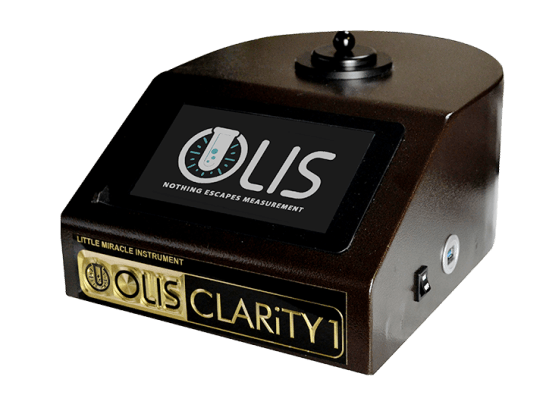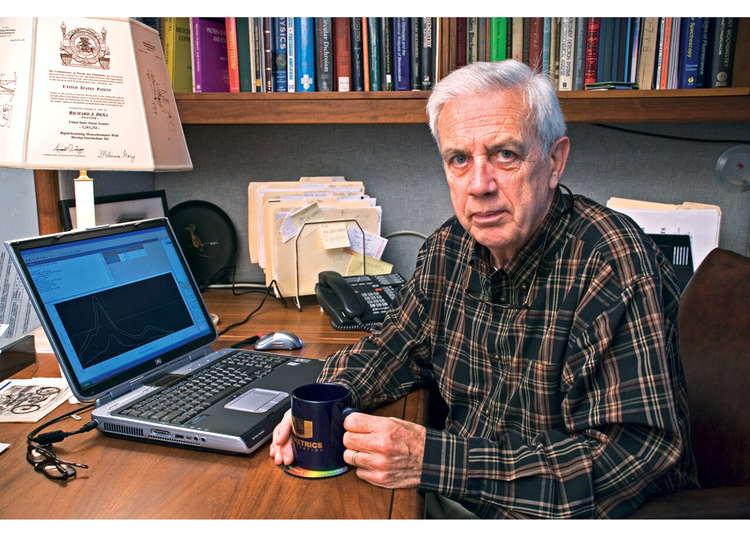Some Known Details About Uv/vis/nir
Some Known Details About Uv/vis/nir
Blog Article
Not known Facts About Uv/vis/nir
Table of ContentsSpectrophotometers Fundamentals ExplainedThe Of Circularly Polarized LuminescenceUv/vis/nir for DummiesMore About Uv/vis/nirNot known Incorrect Statements About Circularly Polarized Luminescence

Although spectrophotometry is most frequently applied to ultraviolet, visible, and infrared radiation, modern-day spectrophotometers can question wide swaths of the electromagnetic spectrum, including x-ray, ultraviolet, visible, infrared, and/or microwave wavelengths. Spectrophotometry is a tool that hinges on the quantitative analysis of molecules depending on just how much light is absorbed by colored compounds.
Uv/vis/nir - The Facts
A spectrophotometer is typically utilized for the measurement of transmittance or reflectance of services, transparent or nontransparent solids, such as polished glass, or gases. Although lots of biochemicals are colored, as in, they absorb noticeable light and for that reason can be determined by colorimetric procedures, even colorless biochemicals can typically be converted to colored compounds suitable for chromogenic color-forming reactions to yield substances ideal for colorimetric analysis.: 65 However, they can likewise be designed to determine the diffusivity on any of the listed light varieties that usually cover around 2002500 nm using different controls and calibrations.
An example of an experiment in which spectrophotometry is utilized is the decision of the equilibrium constant of an option. A specific chain reaction within an option may happen in a forward and reverse instructions, where reactants form products and products break down into reactants. At some time, this chain reaction will reach a point of balance called a balance point.
The Best Strategy To Use For Circularly Polarized Luminescence
The quantity of light that goes through the service is a sign of the concentration of particular chemicals that do not allow light to travel through. The absorption of light is because of the interaction of light with the electronic and vibrational modes of molecules. Each type of particle has a specific set of energy levels related to the makeup of its chemical bonds and nuclei and therefore will absorb light of particular wavelengths, or energies, leading to unique spectral homes.
They learn the facts here now are extensively used in numerous industries including semiconductors, laser and optical manufacturing, printing and forensic examination, as well as in labs for the research study of chemical substances. Spectrophotometry is typically used in measurements of enzyme activities, determinations of protein concentrations, determinations of enzymatic kinetic constants, and measurements of ligand binding reactions.: 65 Eventually, a spectrophotometer is able to identify, depending on the control or calibration, what substances are present in a target and exactly how much through calculations of observed wavelengths.
This would come as a solution to the formerly produced spectrophotometers which were unable to absorb the ultraviolet properly.
The Ultimate Guide To Circular Dichroism
It would be discovered that this did not give satisfactory outcomes, therefore in Design B, there was a shift from a glass to a quartz prism which permitted better absorbance outcomes - UV/Vis/NIR (https://allmyfaves.com/olisclarity1?tab=Olis%20Clarity). From there, Design C was born with a change to the wavelength resolution which ended up having 3 units of it produced
It irradiates the sample with polychromatic light which the sample takes in depending upon its properties. It is transferred back by grating the photodiode selection which identifies the wavelength area of the spectrum. Considering that then, the production and implementation of spectrophotometry gadgets has increased tremendously and has turned into one of the most innovative instruments of our time.

Some Of Uv/vis/nir
The grating can either be movable or repaired.
In such systems, the grating is repaired and the strength of each wavelength of light is determined by a different detector in the array. In addition, most modern-day mid-infrared spectrophotometers use a Fourier transform strategy to acquire the spectral information - http://www.askmap.net/location/6824320/united-states/olis-clarity. This technique is called Fourier transform infrared spectroscopy. When making transmission measurements, the spectrophotometer quantitatively compares the portion of light that goes through a referral service and a test solution, then electronically compares the intensities of the 2 signals and calculates the percentage of transmission of the sample compared to the recommendation requirement.

Report this page